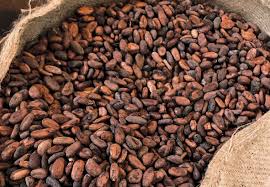Top Cocoa Importing Countries and Global Market Trends Every Exporter Should Know

Introduction
Cocoa remains one of the world’s most sought-after agricultural commodities, forming the foundation of the multi-billion-dollar chocolate industry. As global demand continues to rise, exporters like Dream Vista Global Resources Limited play a vital role in connecting Nigerian cocoa farmers to international buyers who rely on consistent supply and quality.
Understanding where cocoa demand is highest and what drives the market helps exporters make informed decisions, secure better deals, and build long-term trade partnerships. Let’s explore the top cocoa-importing countries and the latest global trends shaping the industry.
1️⃣ Top Cocoa Importing Countries in the World
1. Netherlands – The Heart of Global Cocoa Processing
The Netherlands consistently ranks as the world’s largest importer of cocoa beans, accounting for nearly 20% of global imports. With the port of Amsterdam serving as a key cocoa hub, the country processes massive quantities for European chocolate manufacturers. Nigerian cocoa beans, known for their bold flavor and quality, are in high demand among Dutch processors.
2. Germany – A Leading Chocolate Producer
Germany’s strong chocolate industry drives its cocoa import needs. The country’s manufacturers prioritize high-quality, ethically sourced beans, making Nigerian cocoa a preferred choice for sustainability-conscious buyers.
3. United States – Growing Demand for Premium Cocoa
The United States imports a significant volume of cocoa beans and semi-processed cocoa products for its thriving chocolate, beverage, and cosmetics industries. The market for organic and traceable cocoa continues to expand, offering exporters like Dream Vista a great opportunity to supply certified, premium beans.
4. Belgium and France – The Home of Gourmet Chocolate
These European nations import large quantities of cocoa beans to sustain their artisan chocolate traditions. Exporters who meet their strict quality and flavor standards often enjoy long-term contracts and brand recognition in the luxury chocolate segment.
5. Malaysia and Indonesia – Asian Cocoa Processing Giants
Asia’s chocolate consumption is rapidly growing, and both Malaysia and Indonesia have positioned themselves as regional cocoa-processing powerhouses. Their factories import beans for grinding and re-export, creating new opportunities for African exporters to supply raw materials for Asian markets.
2️⃣ Emerging Cocoa Markets to Watch
While Europe and North America dominate cocoa imports, emerging markets such as China, India, and the Middle East are showing increased appetite for cocoa-based products. Rising disposable incomes, urbanization, and Western food trends are fueling the demand for chocolate and cocoa beverages in these regions.
For exporters, early entry into these markets can mean long-term benefits as demand continues to accelerate.
3️⃣ Key Global Cocoa Market Trends in 2025 and Beyond
a. Shift Toward Sustainable and Traceable Cocoa
Consumers and manufacturers alike now demand transparency and ethical sourcing. Buyers want to know that their cocoa supports fair labor, environmentally responsible farming, and community development.
Dream Vista Global Resources aligns with this trend by sourcing cocoa beans from trained Nigerian farmers who follow sustainable practices that meet international export standards.
b. Growth of the Premium Chocolate Segment
The global chocolate industry is shifting from mass-market to premium and artisanal chocolate. This change favors exporters who can provide high-quality, single-origin cocoa beans with distinctive flavor profiles — exactly what Nigerian cocoa offers.
c. Digitalization in Trade and Logistics
Technology is transforming cocoa exportation through digital contracts, traceability systems, and real-time shipment tracking. Dream Vista leverages technology to ensure timely delivery and full transparency from farm to buyer.
d. Volatility in Cocoa Prices
Cocoa prices fluctuate due to factors like climate change, political instability in producing countries, and shifting global demand. Exporters who maintain strong relationships with multiple buyers and diversify markets — as Dream Vista does — can navigate these fluctuations more effectively.
e. Value Addition in Origin Countries
Countries like Nigeria are now promoting local cocoa processing to export semi-finished products such as cocoa butter, powder, and liquor. This not only increases revenue but also creates jobs and enhances product value. Dream Vista supports this shift through partnerships that encourage local processing and packaging for export.
4️⃣ How Dream Vista Global Resources Positions Itself in the Global Market
At Dream Vista Global Resources Limited, we don’t just export cocoa beans — we export trust, quality, and sustainability.
Our operations are built around:
- Sourcing premium beans directly from local Nigerian farmers.
- Ensuring purity and compliance with international standards.
- Delivering on time to buyers across Europe, Asia, and North America.
- Building transparent partnerships with long-term trade value.
With Nigeria’s favorable climate and rich agricultural heritage, Dream Vista continues to bridge the gap between African farms and the global cocoa supply chain.
Conclusion
As global cocoa demand expands and new markets emerge, exporters who stay informed and prioritize sustainability will lead the industry.
Dream Vista Global Resources Limited stands ready to meet that demand — delivering premium Nigerian cocoa beans to chocolate manufacturers and importers worldwide, one shipment at a time.
